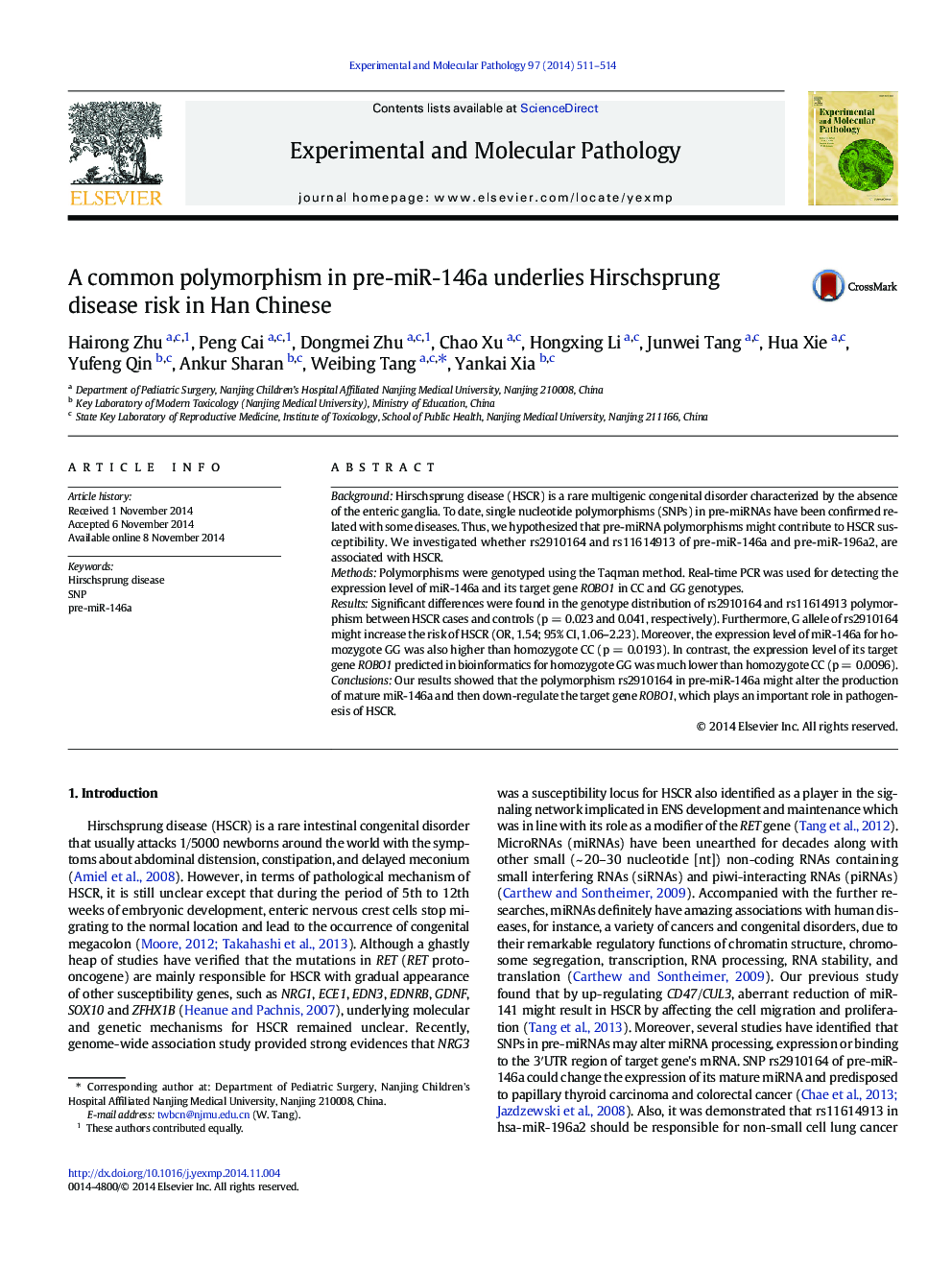| Article ID | Journal | Published Year | Pages | File Type |
|---|---|---|---|---|
| 5888118 | Experimental and Molecular Pathology | 2014 | 4 Pages |
BackgroundHirschsprung disease (HSCR) is a rare multigenic congenital disorder characterized by the absence of the enteric ganglia. To date, single nucleotide polymorphisms (SNPs) in pre-miRNAs have been confirmed related with some diseases. Thus, we hypothesized that pre-miRNA polymorphisms might contribute to HSCR susceptibility. We investigated whether rs2910164 and rs11614913 of pre-miR-146a and pre-miR-196a2, are associated with HSCR.MethodsPolymorphisms were genotyped using the Taqman method. Real-time PCR was used for detecting the expression level of miR-146a and its target gene ROBO1 in CC and GG genotypes.ResultsSignificant differences were found in the genotype distribution of rs2910164 and rs11614913 polymorphism between HSCR cases and controls (p = 0.023 and 0.041, respectively). Furthermore, G allele of rs2910164 might increase the risk of HSCR (OR, 1.54; 95% CI, 1.06-2.23). Moreover, the expression level of miR-146a for homozygote GG was also higher than homozygote CC (p = 0.0193). In contrast, the expression level of its target gene ROBO1 predicted in bioinformatics for homozygote GG was much lower than homozygote CC (p = 0.0096).ConclusionsOur results showed that the polymorphism rs2910164 in pre-miR-146a might alter the production of mature miR-146a and then down-regulate the target gene ROBO1, which plays an important role in pathogenesis of HSCR.
